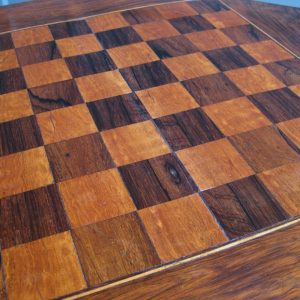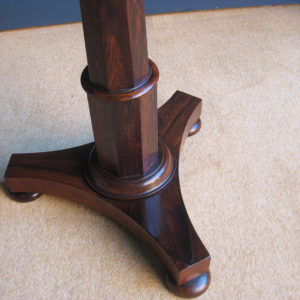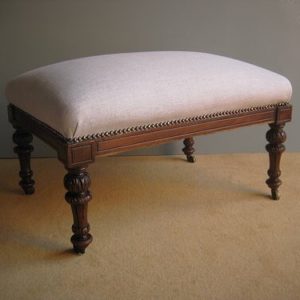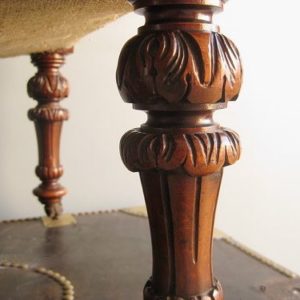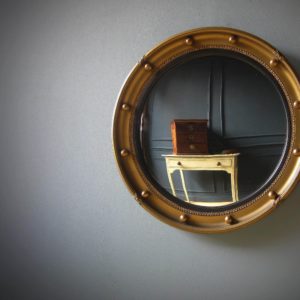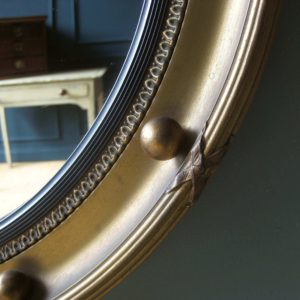Portrait of Beatrice Cenci, late 19th century after the original by Guido Reni 1600
A decorative oil on canvas of the young woman. In good overall condition with two repairs. Presented unframed.
The original by Reni was painted a year after Beatrice’s death and resides in the Galleria Nazionale d’Arte Antica, Pallazo Barberini, Rome
Beatrice Cenci (6 February 1577 – 11 September 1599) was an Italian noblewoman. She is famous as the protagonist in a lurid murder trial in Rome.
Beatrice was the daughter of Francesco Cenci, an aristocrat who, due to his violent temper and immoral behaviour, had found himself in trouble with papal justice more than once. They lived in Rome in the rione Regola, in the Palazzo Cenci, built over the ruins of a medieval fortified palace at the edge of Rome’s Jewish ghetto. Together with them lived also Beatrice’s elder brother Giacomo, Francesco’s second wife, Lucrezia Petroni, and Bernardo, the young boy born from Francesco’s second marriage. Among their other possessions there was a castle, La Rocca of Petrella Salto, a small village near Rieti, north of Rome.
History
According to the legend, Francesco Cenci abused his wife and his sons, and had reached the point of committing incest with Beatrice. He had been jailed for other crimes, but thanks to the leniency with which the nobles were treated, he had been freed early.
Beatrice had tried to inform the authorities about the frequent mistreatments, but nothing had happened, although everybody in Rome knew what kind of person her father was. When he found out that his daughter had reported against him, he sent Beatrice and Lucrezia away from Rome, to live in the family’s country castle. The four Cenci decided they had no alternative but to try to get rid of Francesco, and all together organised a plot.
In 1598, during one of Francesco’s stays at the castle, two vassals (one of whom had become Beatrice’s secret lover) helped them to drug the man, but this failed to kill Francesco. Following this Beatrice, her siblings and step mother bludgeoned Francesco to death with a hammer and threw the body off a balcony to make it look like an accident. However, no one believed the death to be accidental.
Somehow his absence was noticed, and the papal police tried to find out what had happened. Beatrice’s lover was tortured, and died without revealing the truth. Meanwhile a family friend, who was aware of the murder, ordered the killing of the second vassal, to avoid any risk. The plot was discovered all the same and the four members of the Cenci family were arrested, found guilty, and sentenced to death.
The common people of Rome, knowing the reasons for the murder, protested against the tribunal’s decision, obtaining a short postponement of the execution. However, Pope Clement VIII, fearing a spate of familial murders (the Countess of Santa Croce had recently been murdered by her son for financial gain), showed no mercy at all. On 11 September 1599, at dawn, they were taken to Sant’Angelo Bridge, where the scaffold was usually built.
In the cart to the scaffold, Giacomo was subjected to continual torture. On reaching the scaffold his head was smashed with a mallet. His corpse was then quartered. The public spectacle continued with the executions of first Lucrezia and finally Beatrice both took their turns on the block, to be beheaded with a sword. Only the 12-year-old, Bernardino, was spared, yet he too was led to the scaffold and forced to witness the execution of his relatives, before returning to prison and having his properties confiscated (to be given to the pope’s own family). It had been decreed that Bernadino should then become a galley slave for the remainder of his life however, he was released a year later.
Beatrice was buried in the church of San Pietro in Montorio. For the people of Rome she became a symbol of resistance against the arrogant aristocracy and a legend arose: every year on the night before her death, she came back to the bridge carrying her severed head.
Dimensions in CM
H 66 W 52




